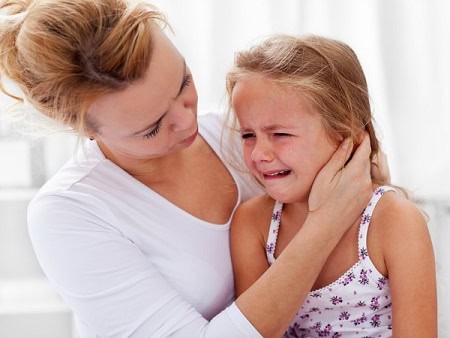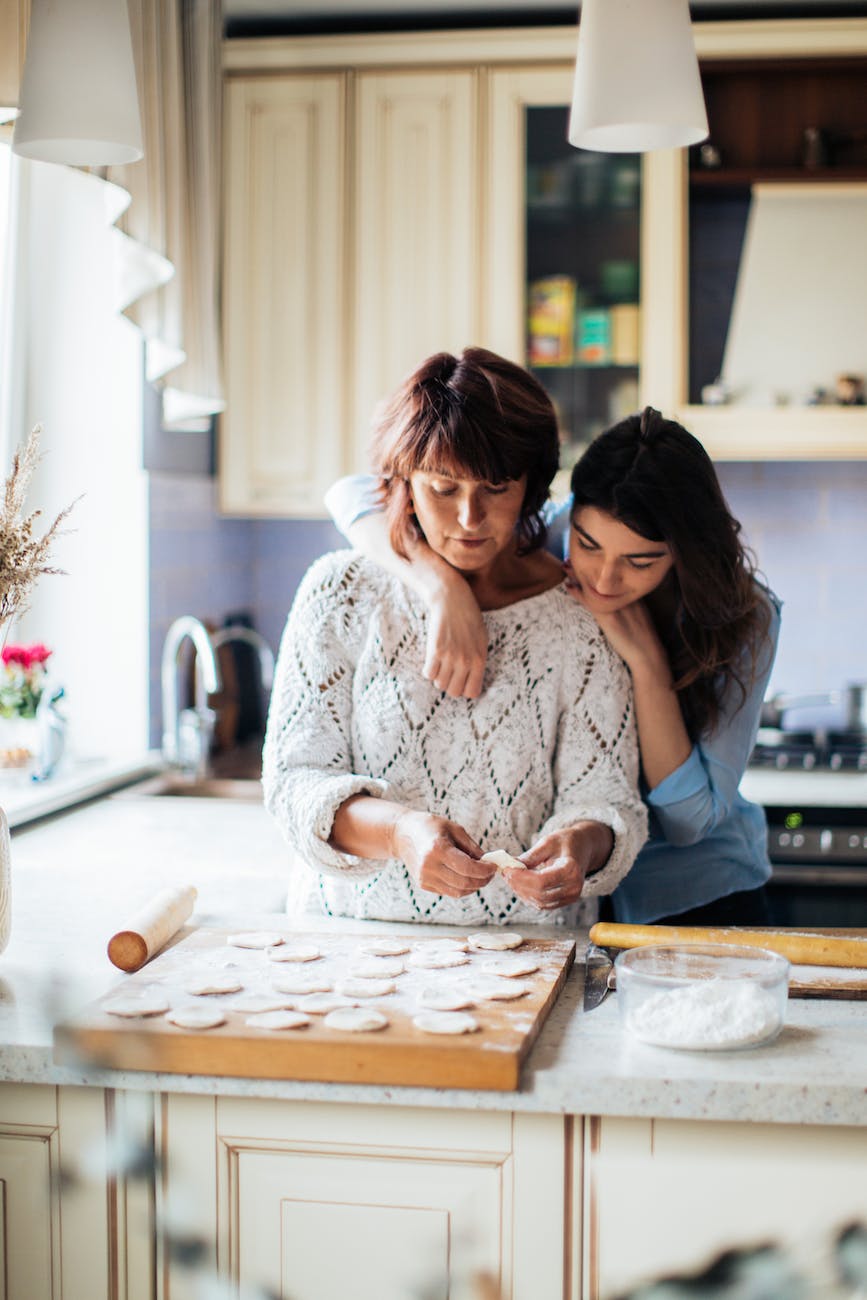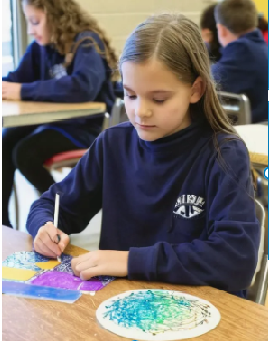Parents Can Try These 9 Strategies to Help Their Child with Separation Anxiety

|
Getting your Trinity Audio player ready...
|
What is Separation Anxiety Disorder?
According the the American Psychiatric Association, a person with separation anxiety disorder is excessively fearful or anxious about separating from the people they feel attached to.
To meet criteria for separation anxiety disorder, a child must have anxious feelings about separating that would not be expected based on their age. The feelings must persist for at least four weeks and they must cause problems with functioning.
Only a trained professional such as a developmental pediatrician, psychiatrist, or psychologist can diagnose separation anxiety disorder.
A person with separation anxiety disorder may be persistently worried about losing the person closest to them, may be reluctant or refuse to go out or sleep away from home or without that person, or may experience nightmares about separation.
Physical symptoms of distress often develop in childhood, but symptoms can carry though to adulthood. Children with separation anxiety disorder may be at-risk for school refusal in the future.

Behaviors related to school refusal may include:
- severe emotional distress about attending school (e.g., anxiety, temper tantrums, depression, or somatic symptoms – such as pain or fatigue)
- the child often tries to persuade parents to allow them to stay home
- the child often attempts to conceal absence from parents
- child stays home during school hours because it is safe and secure
- child expresses willingness to do schoolwork and complies with completing work at home
Is Some Separation Anxiety Typical?
Some separation anxiety is typical in young children around three or four years old. It is common for them to cling to parents, cry, and resist when going to another caregiver (e.g., school, daycare, babysitter, etc.). However, if the anxiety seems severe (in young or older children) in that it is causing extreme distress and interfering with daily functioning, talking to a child therapist is recommended.
Strategies to Support Children with Separation Anxiety
Some children may receive a diagnosis of separation anxiety disorder. Other children may manifest symptoms that are never officially diagnosed. Regardless of whether there is an official diagnosis, there are strategies we can put into place to assist a child with symptoms of separation anxiety.
As previously stated, some children would benefit from therapy with a child psychologist or counselor, but in addition to that, there are ways that parents can provide support to children with symptoms of separation anxiety.
See Part 2: Strategies for Schools to Help Children with Separation Anxiety
How Can Parents Help?
When examining therapeutic options for treating separation anxiety disorder, research indicates that psycho-educational interventions are effective methods of treatment. The interventions include:
- education of child and parents (e.g., read research studies, talk to counselor/support group)
- collaboration with school staff (e.g., meet with school staff, provide literature and recommendations from counselor)
- training to increase a child’s independence and sense of competence (e.g., counseling to build self-esteem and sense of adequacy, positive feedback from school staff and caregivers, opportunities to meet and celebrate small successes, small brief periods of alone time without caregiver with close supervision, etc.)

For more on this research see Separation Anxiety in Children and Adolescents.
When working with a therapist, the most effective/research-based non-pharmacological (not involving medication) method for reducing separation anxiety in children is cognitive-behavioral therapy (CBT). To read more about CBT and how it has effectively been utilized to treat separation anxiety, see Separation Anxiety Disorder in Youth: Phenomenology, Assessment, and Treatment.
9 Strategies for Parents to Try to Help Their Child with Separation Anxiety
1. Educate your child about anxiety.
Talk about what anxiety feels like so children know how to recognize it when it occurs. For instance, it may feel like a knot in the stomach, pressure in the chest, sweating, rapid heartbeat, or brain fog. Encourage your child to report their symptoms to you.
Remind them that everyone experiences some anxiety sometimes and it is completely normal. Explain that some anxiety is good because it is our body’s way of warning us of potentially dangerous situations.
You can also let your child know sometimes anxiety occurs due to a perceived fear that may be highly unlikely or non-existent. When anxiety tells us to stay away from non-dangerous situations, causes us to avoid experiences that may actually be good for us, or makes it hard for us to focus or participate in everyday tasks, we need to learn coping strategies to get through these times.
2. Listen to your child’s feelings with empathy.
Show your child that you understand how they feel. Knowing that someone understands, helps your child feel less alone in their anxiety and more connected to you. Stay away from statements like just get over it, don’t be a baby, etc.

3. Keep reassurance reasonable.
If your child asks questions like, “will I be okay, are you coming back, when am I going home,” it is okay to reassure them one time, but stay away from reassuring them over and over, as this could just prolong the separation and feed into the anxiety.
You can say something like, I will see you after school, I am confident that you will be okay, you can talk to (name of trusted adult) if you need help. If your child keeps asking similar questions seeking more reassurance, remind them that you already reassured them once, and it is not effective to reassure over and over.
For more on the topic of reassurance as it relates to separation anxiety see: Home Management Strategies for Separation Anxiety Disorder
4. Keep calm when your child becomes anxious.
Pay attention to your own mood and demeanor. Stay calm but confident. You can remind your child that they (and you) have gotten through similar anxious situations before…remember when you felt anxious when…and you got through it, you were okay. Remember when I was worried about x, y, z, and this was how it turned out, etc.
5. Teach simple relaxation techniques such as deep breathing, stretching, counting to 10, or visualizing a relaxing scene.
Learning how to relax gives the child a sense of control over their body. These strategies can be done pro-acvtively to prevent anxiety, or during an anxiety attack to promote a sense of calm.
6. Plan transitions before they happen, such as getting to school in the morning or preparing for bed at night.
For example, come up with a routine/discuss the steps that are going to occur. You can even take pictures of the steps and put them into a little picture book to review with your child. Here is an example, but of course you can use your own pictures to match your routine or even make a video of your child doing the routine.

You Can Print this Morning Routine for Your Use
7. Help your child prepare a list of possible strategies in case anxiety appears in “difficult” situations.
Strategies on the list may include:
- relaxation techniques
- holding an object that provides comfort (e.g., picture of parent, favorite item from home)
- drawing a picture
- writing down their feeling
- thinking of a funny time
- thinking of another time that they had anxiety but got through it and it turned out okay
- reminding themselves that they will be okay and they will be going home at a certain time
8. Support your child’s separation from you (in gradual steps if needed).
If your child continues to stay with you (or any person they are attached to) and avoids fearful situations it will become even harder to separate. It is important to address the concerns as soon as possible for the best outcome. Once your child sees that they are okay without their person of attachment there, they will start to adjust and eventually make the shift to be more comfortable with separation.
Depending on your child’s age, encourage them to participate in activities outside the home, without the person they are anxious to detach from (promote exposure). Examples may include a birthday party, staying with a relative for a few hours, or going to a friend’s house. Do not let them stay at home to avoid distress (do not allow avoidance). You may want to start with short increments of time and build up as your child gets more used to these activities.
9. Praise your child’s efforts to address their symptoms.
This may sound like “I know you were anxious to go to school this morning, but you were so brave when you walked in;” “I love how you went to that birthday party and stayed until it was over;” “You should be so proud of yourself! You calmed yourself down by drawing a picture when I had to leave you with the babysitter to go to work this morning“.
If your child’s separation anxiety is interfering with daily functioning (e.g., frequent physical symptoms, hiding or running away from anxiety producing situations, refusal to participate in school or stay in the classroom, reluctant to interact with peers or other adults, refusal to participate in activities) contact a mental health professional for support.
Two research-based programs for treating Separation Anxiety Disorder include the Coping Cat Program and the FRIENDS Program. These programs are intended to be utilized by mental health professionals treating children for anxiety-related conditions such as separation anxiety disorder. For more on the research regarding the effectiveness of these programs see Separation Anxiety Disorder in Youth: Phenomenology, Assessment, and Treatment.
Related Article: Evidence Suggests That the Coping Cat Program Reduces Anxiety in Children and Teens
See Part 2: Strategies for Helping Children with Separation Anxiety Disorder in School
Although I examined what the research had to say about treating Separation Anxiety Disorder in children, I also turned to real parents who have children with separation anxiety to see what strategies have worked for their children. These are not necessarily strategies I am recommending, just what other real parents had to say.
Holding a small comfort toy, sometimes with lavender oil on it has helped. The What to Do When you Worry Too Much book also helped.
My child carried a pocket sized photograph of me to carry around. A spray of my perfume helped my daughter.
When our daughter was in preschool and then elementary school she was allowed to keep a small family photo and small stuffed friend in her school cubby. She had a 30 second timer so she didn’t spend all day at her cubby. Near the end of 1st grade she started just keeping the items in her backpack and that was enough for her.
My little girl suffers with anxiety leaving her at school was a particular hard time especially last year (5 years old) we brought a handkerchief and I wrote little messages on it so if she got bad during the day she had my little messages to read to remind her she is okay. I also kissed it with lipstick on so she had mommy kisses at all times. She also had a little message from her nanny because when nanny was on holiday it made her struggle a little more too. This was a real comfort and she still is using it every now and then (6 years old). Not only is it a comfort, but the perfect thing to keep in a pocket or up her sleeve too.
My daughter is 12. We wear matching moon charm necklaces. It seems to be working so far.
Our son had severe separation anxiety and developed ritualistic behaviors for when the separation would occur. Further exasperating his anxiety if he felt that he didn’t do the ritualistic behavior right. I would stay with him in preschool and Prek if he was really upset and slowly transition out after an hour or so. While there, I would slowly withdraw to the corner so he could see me but I wasn’t involved directly in their activities.
At that age an administrator gave him a ‘job’ to do with her in the morning to keep him busy and his mind off me leaving. That did help. We decided in 1st grade that we were not going to push him or force him to go to school if he was really anxious. It wasn’t healthy mentally, emotionally, and physically for him, myself and the rest of the family. Many questioned this and others were supportive.
We homeschool now (pulled him out middle of 2nd grade), not due to the separation anxiety, but for many reasons…general anxiety being one….and he is very successful. His confidence is remarkable…almost too comfortable separating.
For my son, changing the point of separation worked. Once I put him on the school bus instead of dropping him to school he was fine. Changing the ritual that included anxiety and setting up a new one seemed to be the key. I still walked him to the bus stop to say goodbye there.
For strategies schools can use to help children with separation anxiety, see Part 2 of this article.
Thank you for visiting Education and Behavior, an online library of research-based strategies to support children in the areas of academics, behavior, and social-emotional development.
This article was written prior to COVID-19 changes in the school and community setting. Current treatment and care relevant to separation anxiety, returning to school, separating from parents, etc. need to be handled with careful thought and consideration in light of these changes. All decisions for a child should be discussed by their parents/guardians, along with other relevant persons with parental permission (e.g., educators, clinicians, etc.).






